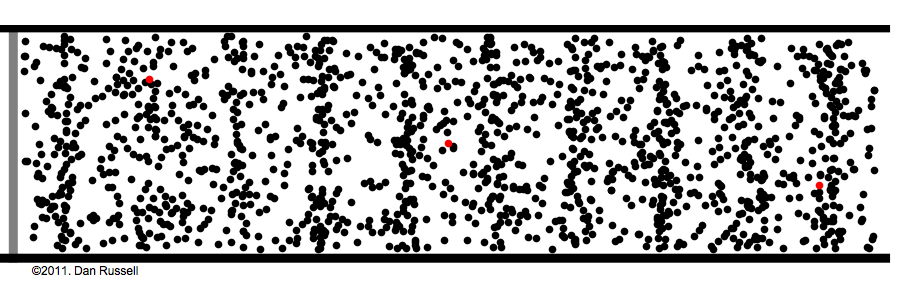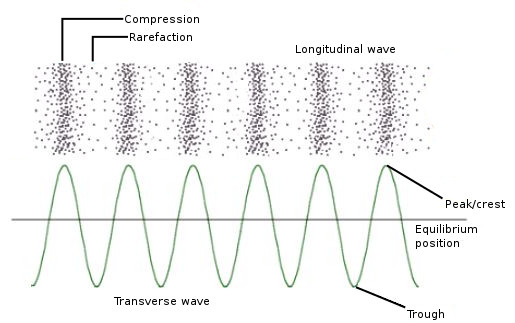The Shape of Waves
As you learned at GCSE, there are two shapes of waves: transverse and longitudinal.
Transverse waves

In transverse waves, particles oscillate at ninety degrees to the direction of energy transfer. No particle moves along the wave - they are simply disrupted from their equilibrium position. Examples of transverse waves include anything in the electromagnetic spectrum, water waves and S-waves from earthquakes.
Transverse waves create a series of peaks and troughs, where the oscillating particles are at their maximum displacement from their equilibrium position.
Longitudinal waves

In longitudinal waves, particles oscillate parallel to the direction of energy transfer. Despite this, no particle moves along the entirety of the wave - like before they simply oscillate around their equilibrium position. Examples of longitudinal waves include sound and P-waves from earthquakes.
Longitudinal waves create a series of compressions (areas of higher pressure) and rarefactions (areas of lower pressure). These areas can be mapped onto a diagram of a transverse wave, as peaks and troughs respectively:
